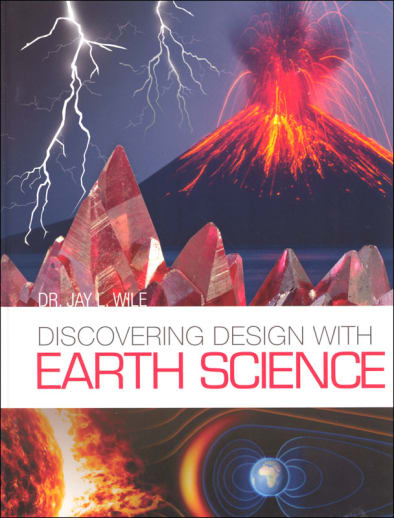This exciting new course from Dr. Wile explores the design and complexity of the Earth, leading students to discover truths about its design and the One who designed it. Begin with the basic concepts necessary to study Earth Science, including a brief look at chemistry, the metric system, temperature, volume, density, and concentration. Once students understand this foundational information, they will thoroughly learn about the geosphere, hydrosphere, and atmosphere. This course dives deep into these topics. For example, as students learn about the geosphere (core, mantle, crust, etc.), each area is studied in great detail. As they study the earth's crust, they learn about minerals, rocks, and the rock cycle. Plate tectonics is then covered, which leads to a discussion of seismic waves, earthquakes, and volcanoes. Students then learn about fossils and how both uniformitarians and catastrophists interpret those fossils as well as the sedimentary rocks in which they are found. A discussion that compares uniformitarianism and catastrophism follows, in which the strengths and weaknesses of each view are covered. Once these are firmly understood, the hydrosphere is studied beginning with the properties of water (polarity, hydrogen bonding, and heat capacity). The hydrologic cycle and residence time are then explored, leading students into a study of waves, currents, and tides in the ocean, along with ice and freshwater reservoirs. Students then learn about the atmosphere, including the composition and sections of air, temperature gradients, and pollutants, and weather. The final chapters focus on the solar system and the universe. Dr. Wile takes the student on an intellectual journey through evolutionary and young earth creation hypotheses and evidence through comparing the core beliefs of uniformitarianism and catastrophism. He stresses that all scientists approach science with a bias, including him, but he strives to explain both perspectives in a balanced manner, encouraging students to think through their own beliefs.
This a lab-based science program that provides 50+ hours of lab instruction. A Lab Kit containing specific minerals, rocks, and fossils is required. Contact us regarding availability. It will be impossible to do many of the experiments without the specific kit created for this course.
The hardcover
Textbook contains 16 chapters. Chapters contain the student readings, experiments, and comprehension check questions (and answers). Each chapter concludes with a chapter review that prepares students for the chapter test. In lieu of lesson plans, the daily lessons end with the comprehension check. Following this path, each chapter will take 7 days to complete, allowing 2 days for the chapter review and one day for the chapter test. There is a bit of flexibility built in for students who may need a little more time to complete a chapter. The course is written in a narrative fashion and assumes there is no teacher present, and the information is new to the student. While this may seem more text heavy compared to other courses, the narration does a great job of explaining information in a way students can grasp. Colorful graphics and illustrations are scattered throughout the text with numerous full color illustrations in the appendix. Also included is a supply list by chapter and index. The softcover
Answer Key and Tests provides a brief course introduction, recommended grading scale, and answers to the chapter reviews and tests. Tests are also included. Tests are reproducible for family use.
The textbook and answer key are available separately or in a package.
Optional resources include the USB Audiobook with chapter readings (no comprehension questions or experiments), and the printed Student Workbook, which includes the comprehension questions and chapter review questions with space to write answers. It also provides guidance on creating a lab notebook, and blank pages for documenting labs.
Purchase of course includes access to a course website with helpful resources including direction on recording labs and samples of the first few labs, video clips, and other links. There is also a question-and-answer service available with Dr. Wile. Information for accessing these free resources is included in the text/answer key introduction.
This is an excellent course that meets the needs for a lab-based Earth Science credit in Jr High or High School. Students will appreciate the thorough, well-explained lessons, and parents will appreciate the focus on student independence.

